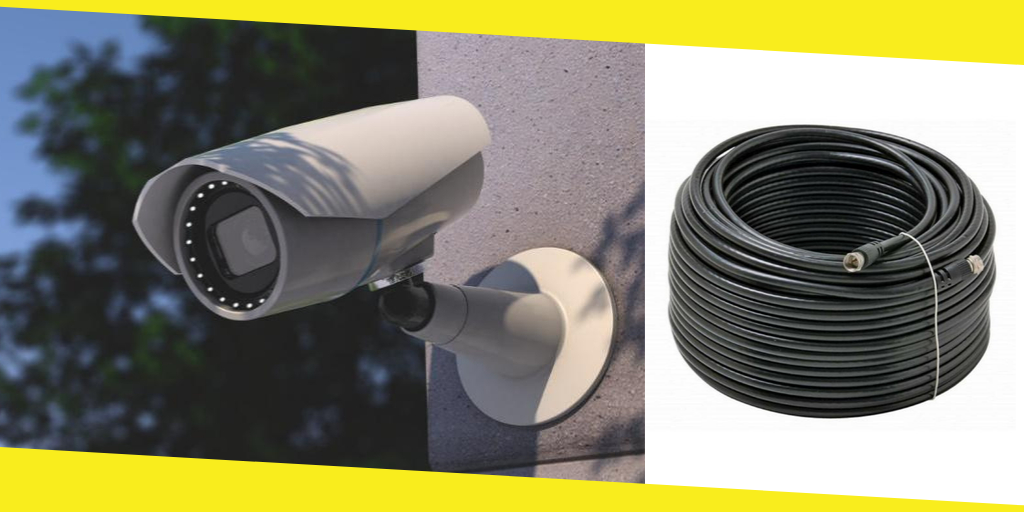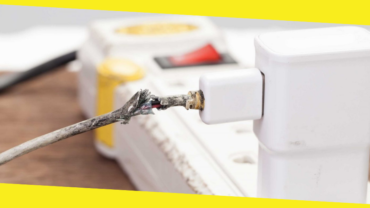CCTV Coaxial Cable | an Essential Part of Your Closed-Circuit Television

As the global electronics industry entered an unprecedented period these years, the TV coaxial cable market has also reached its historical peak. It’s an undeniable fact that CCTV coaxial cable plays a vital role in our daily life. If you are the one who wants to purchase an ideal TV coaxial cable for your closed-circuit television (CCTV), you are on the right path.
Contents
ToggleWhy Do You Need a Coaxial Cable for Your CCTV?
The first step to answer this question is to get to know about CCTV. CCTV, an independent and complete system, uses optical fibers, TV coaxial cables or microwave to transmit video signals in a closed-loop.
It seems that CCTV has been widely used everywhere, such as a bank, school, hospital, community, hotel, warehouse, transportation hub, etc. The reason is that you can catch what actually happened on the scene under surveillance to make sure the safety of your life and your property. What’s more, you can use it for prolonged monitoring even when you are sleeping or under severe weather, which can significantly save the expenditure of your money and energy.
That’s why there are many TV coaxial cable manufacturers size the business chance and create high-quality cables to meet the CCTV market need. Take Vnzane as an example. Vnzane is a China-based enterprise with thirty-year experience in creating network Infrastructure cable and TV coaxial cable. The high-quality products and superior services have earned Vnzane a good reputation in the cable industry and enabled it to sell products to the whole world.
CCTV mainly includes three parts: front-end equipment, control system and signal transmission parts. To convert the image signals of the scene into electrical signals, the front-end equipment is the camera device kit including various cameras, lenses, protective shields, and brackets. The control system performs multiple functions including the digital acquisition of analog video surveillance signal, MPEG-1 compression, recording and retrieval of surveillance data, hard disk video recording and so on. The last one is the most important one, that is, signal transmission part. It is mainly composed of TV coaxial cable and it requires the real-time transmission of the image with low loss and reliable quality recorded by the front-end equipment.
Now Let’s Gain Some Details About TV Coaxial Cable
As a matter of fact, CCTV coaxial cable served as an essential and indispensable part of security devices. Although it comes in a wide variety of parameters, many people fail to pay particular attention to the specification. For example, you are supposed to choose a proper impedance. The impedance of TV Coaxial cable is mainly divided into 75 ohms and 50 ohms. If an improper impedance is selected, it may cause damage to the connector device. The type of equipment and devices to be connected determines the cable impedance be used. Generally speaking, 75 ohm cable is usually used for video applications, while 50 ohm cable is more often used for data transmitting and wireless network. A typical case is the RG59 Siamese Coaxial Cable from Vnzane. Its Impedance is 72 to 78 Ohm and it can be used over a wide temperature range from -20 °C to 75 °C. Therefore, this good-quality product is exactly suitable for CCTV Control System with a long lifespan.
CCTV coaxial cable is divided into four layers: central copper wire, mesh conducting layer, plastic insulator, and jacket. It has two sparkling points compared with ordinary cables.
The first innovation is the mesh conducting layer. If ordinary wires are used to transmit high-frequency current, such cables will be equivalent to an antenna that transmits radio outward. It means that the loss of signal power and the intensity of the received signal. However, the mesh conducting layer contacted with the ground can perfectly solve this problem by controlling and isolating the radio signals emitted by the central copper wire.
As the improvement and development of TV coaxial cable, there is an annoying problem: if one section of the cable is compressed or distorted, the distance between the central wire and the mesh conducting layer will change, which will cause internal radio waves to be reflected back to the source of the signal. This will lead to a decrease in the received signal power. Here comes another innovative idea. To overcome this problem, a plastic insulator is added between the central wire and the mesh conducting layer to ensure that the distance between them remains the same. This also explains the reason why TV coaxial cable is usually so rigid and not easy to bend.
After you finish reading, we hope you can gain some knowledge about cctv coaxial cable. If you want to pick a right one, why not consider RG59 Siamese Coaxial Cable from Vnzane? Just give it a try.
You may like this
Recommended For You
What to Do When Consumer Products are Defective
Arifur Rahman
He is a professional SEO specialist & a freelance writer with a lot of passion to write about technology, startups, travel, lifestyle & other niches. He has contributed to many famous websites. He lives, breathes digital marketing, and helped many companies to grow their business. His main goal is to spread his knowledge that he grabbed in many years and ideas to all generations.




